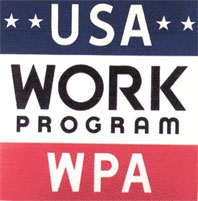 As someone who is both an academic and a political activist, I think quite a bit about how to translate my ideas outside of the academy, outside of the tortured jargon of the modern profession, and to turn it into something useful for politicians, civil servants, activists, and other political actors. My great personal heroes are those individuals who managed to be both intellectual and political actors – Harry Hopkins and his staff of brilliant social scientists and social workers at the WPA (Works Progress Administration), John Kenneth Galbraith, Paul Douglas, Michael Harrington (sort of), and Paul Wellstone. My ambition is to become someone like Jacob Hacker – an academic who produces ideas that are picked up by think tanks and political constituencies, that politicians latch onto as compelling and winnable, that forms a consensus. In other words, someone whose intellectual work is at the same time political work, shaping the world around it.
As someone who is both an academic and a political activist, I think quite a bit about how to translate my ideas outside of the academy, outside of the tortured jargon of the modern profession, and to turn it into something useful for politicians, civil servants, activists, and other political actors. My great personal heroes are those individuals who managed to be both intellectual and political actors – Harry Hopkins and his staff of brilliant social scientists and social workers at the WPA (Works Progress Administration), John Kenneth Galbraith, Paul Douglas, Michael Harrington (sort of), and Paul Wellstone. My ambition is to become someone like Jacob Hacker – an academic who produces ideas that are picked up by think tanks and political constituencies, that politicians latch onto as compelling and winnable, that forms a consensus. In other words, someone whose intellectual work is at the same time political work, shaping the world around it.
And this is personal for me because, as someone who is a historian of public policy, one of the side-effects of my research has been to pick up worthy ideas of the past and to become fascinated by them. If you study the history of public policy, you quickly realize that policy options are rarely chosen or discarded on the basis of what’s the best way of doing things, and that many ideas that seem to be intellectually superior are left in the dustbin of history.
One of those ideas, the subject of my dissertation, is the direct creation of jobs by the government, a policy that has been variously called “public employment,” “public works,” “work relief,” “jobs policy,” or “employer of last resort.” It’s especially relevant in this current recession, and it was something I wrote about repeatedly from the 2008 election through the vote on Obama’s stimulus package. And as I wrote and wrote, I also sought for a way to boil down my argument into the simplest patois of Washington, D.C., the Powerpoint presentation.
So here is my latest effort at this, which you can see embedded below.
A few historical notes:
- Jacob Baker and Emerson Ross were both WPA staffers who were responsible for writing some of the most important policy proposals of the WPA, describing what they thought the WPA was doing and how it worked, and what they thought the program should become.
- Lewis Baxter was an economic analyst hired by the WPA’s predecessor, FERA (Federal Emergency Relief Administration), to produce a model that would simulate a public employment program of varying sizes and the impact on the U.S economy.
– Steven Attewell
[…] Public Employment: A Presentation (including a fancy embedded Powerpoint presentation!) […]
[…] Public Employment: A Presentation […]
[…] first step is to establish a permanent Public Employment Program. As I have argued before, what you want is a scalable system of temporary public employment jobs […]
[…] as I’ve suggested before, one of the best ways to fight a recession is to create jobs directly. Hence, with all this new […]
[…] before I even started the Job Insurance series, I wrote this post on presenting a plan for public employment. And I still believe that it’s important for academics who are also […]